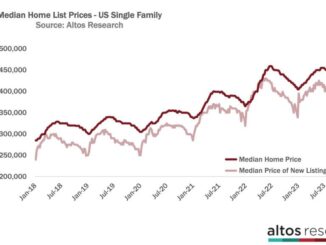
High mortgage rates might have cooled much of America’s spring real estate market, but this is by no means true across the board. In fact, homebuyers’ search for affordable housing has made certain markets hotter than ever.
“This spring’s housing market may be sluggish nationally, but April’s hottest markets are still seeing high demand and a quick pace of sale,” says economic data analyst Hannah Jones of the latest Realtor.com® Hottest Markets List.
This list ranks cities by examining two variables: demand (measured by the number of views per listing) and pace (measured by how long listings linger for sale before getting snapped up).

The Northeast’s ‘affordability advantage’
Many markets that populate the top of this list have what Jones calls an “affordability advantage,” although that affordability is often relative.
For instance, the top two hottest markets of Concord and Manchester, NH, have median home prices ($522,000 and $533,000, respectively) above the national median of $430,000. Yet the prices are a bargain compared with the $839,000 you’d have to pay in nearby Boston (which, incidentally, ranks as the 14th hottest market and is by far the priciest on this list).
As real estate broker Pamela Young, of Re/Max Insight, who sells homes in both Concord and Manchester, puts it, “It’s nice to be able nice to travel to Boston without having to live there—or pay their taxes.”
Rounding out the top five hottest markets are a cluster of fellow Northeastern towns, including Hartford, CT; Rochester, NY; and Springfield, MA. (Metros include the main city and surrounding towns, suburbs, and smaller urban areas.)
In fact, adds Jones, “nine of the 12 Northeast markets on this month’s list are clustered together, generally surrounding the Boston area. Both Massachusetts and the larger New England area boast strong employment data, outpacing the U.S. in employment growth over the last year. High housing demand and tight inventory keep upward pressure on prices and, as a result, buyers are looking farther afield for affordability in the region.”
The rise of Midwest real estate
Despite their sunny climes, the West and South are stuck in a deep freeze when it comes to breaking into the hottest markets, failing to crack the top 20 list for the second month in a row. While the Northeast boasted the most markets on the list. with 12 cities, the Midwest represented the remaining eight.
Illinois and Missouri each have one hottest market on the list, and Wisconsin, Ohio, and Indiana each nabbed two spots. All of the Midwestern markets received an average of 2.5 times more views than usual and spent an average of two fewer weeks on the market.
Buyers are heading inland in the hopes that lower home prices will take the edge off today’s hefty mortgage rates, which currently average 6.39%, according to Freddie Mac.
“Overall, 13 of April’s hottest markets had median listing prices below the national median,” adds Jones.
The average listing price for these Midwestern markets was $310,000. But the lowest-priced Midwestern market is Rockford, IL, which had an average list price of $180,000, 58.1% lower than what the rest of the country saw in April.
“Buyers are out there,” says Rion Tovar-South, the designated managing broker and owner of Weichert Realtors Tovar Properties in Rockford, IL.
They are driven to Rockford by “lower taxes and more attractive home prices,” adds Tovar-South. “In addition, our agents are seeing buyers moving from the Chicago area as well as individuals that previously moved out of state moving back.”
But how long will home prices stay low?
Yet homebuyer demand in these hottest markets means available homes are disappearing fast.
“While inventory has increased 48.3% relative to last April at the U.S. level, all of the hottest markets except Fort Wayne, IN, have seen either slower inventory growth or even inventory decline,” says Jones.
“Inventory is still low in our market. We definitely need more sellers to list their homes,” adds Tovar-South. Indeed, Rockford’s inventory has dropped 23% compared with a year earlier.
And fewer homes for sale drive up competition among buyers, which can bring on bidding wars. And bidding wars lead to rising home prices as sellers see an opportunity to cash in.
Even where home prices are low, these hot markets have seen prices increase by 17.2% year over year on average. To put that percentage in perspective, consider this: It’s seven times greater than the national price growth rate of 2.5%.
“April is the ninth month in a row that the average hottest markets’ price growth climbed beyond U.S. price growth, which has been falling since June,” says Jones.
Source: www.realtor.com
ENB
Sandstone Group



